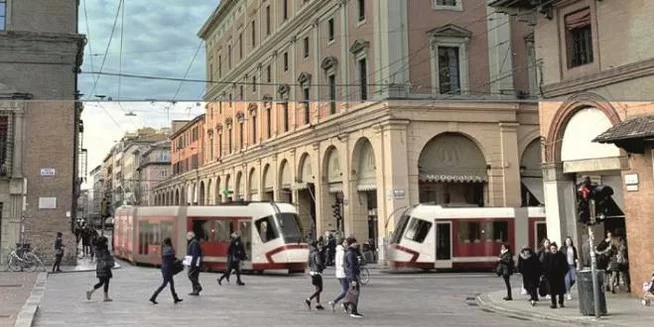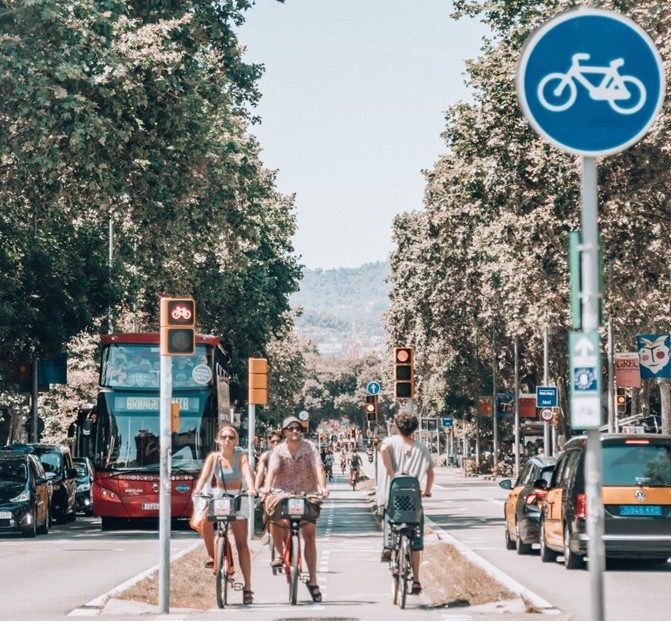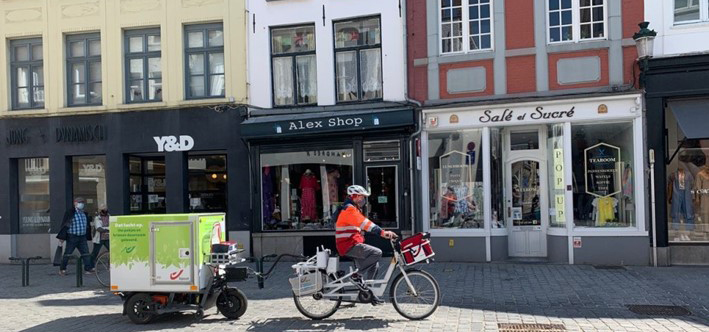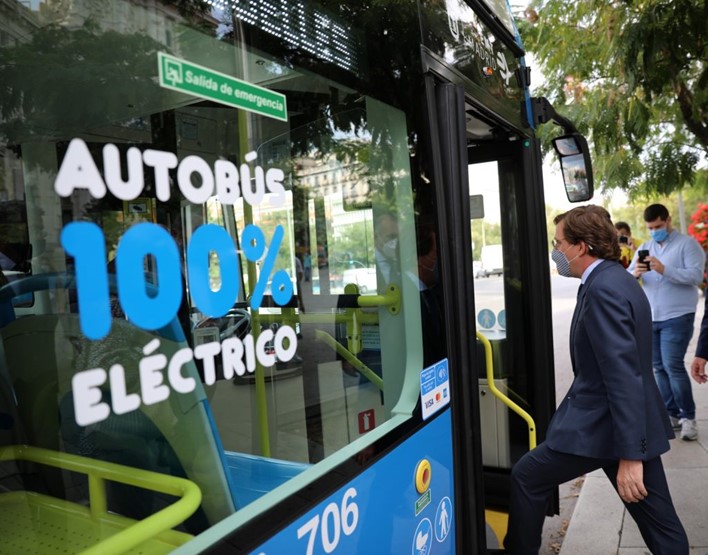Reading Time: 11 minutes
The era of sustainable urban mobility
A common thread links mobility in cities across Europe: the decarbonisation of transport systems, in line with the European Green Deal. Local governments are tapping into the potential of multiple sustainable mobility tools to accelerate their path towards carbon neutrality: from setting low-emission zones to building cycling and pedestrian paths, from fostering electric mobility uptake to boosting public transport services, from encouraging multimodality and sustainable logistics to improving road safety. Meanwhile EU-funded projects continue to test cutting-edge solutions that can further help to switch away from a car-centric mentality and create more liveable, greener, healthier cities.
A common thread links mobility in cities across Europe: the decarbonisation of transport systems, in line with the European Green Deal. Local governments are tapping into the potential of multiple sustainable mobility tools to accelerate their path towards carbon neutrality: from setting low-emission zones to building cycling and pedestrian paths, from fostering electric mobility uptake to boosting public transport services, from encouraging multimodality and sustainable logistics to improving road safety. Meanwhile EU-funded projects continue to test cutting-edge solutions that can further help to switch away from a car-centric mentality and create more liveable, greener, healthier cities.
With transport accounting for a quarter of Europe’s greenhouse gas emissions, and with the European Environment Agency calling air pollution “the largest environmental health risk on the continent,” sustainable mobility actions address pressing concerns about health, congestion, noise and air pollution in cities.
For local authorities, this translates into a need to achieve a 90% reduction of greenhouse gas emissions produced by the transport sector. It’s no wonder that mayors surveyed by the Eurocities Pulse listed sustainable mobility as their second top priority for 2023. Moreover, it is closely linked to the top goal on climate action.
Striving for climate neutrality has far-reaching, positive consequences on urban life and coincides with other local ambitions. By reducing the number of cars and lowering speed limits, municipalities are also making space for pedestrians and cyclists, opening up green areas and increasing overall liveability and safety. Thanks to new technology, digital mobility is facilitating sustainable modes of transport, allowing them to connect with each other. Meanwhile, shared mobility is becoming a viable alternative to private cars which.
In recent decades, local governments have laid the groundwork for this green revolution, creating the conditions for a switch to sustainable and active travel. Although adapted to local needs, cities’ actions can be grouped into several categories. These include:
- Increasing the quality of public transport services and switching to sustainable bus fleets
- Favouring rail-based public transport systems that include tram, light rail and metro
- Creating low-emission zones
- Building sustainable transport infrastructure such as cycling and pedestrian paths
- Improving road safety and setting new speed limits
- Banning traffic from central areas
- Encouraging behavioural change
- Fostering the uptake of shared electric mobility
- Deploying electric charging points
- Decarbonising urban logistics
- Bringing down barriers to make mobility more inclusive
For local governments, the path to sustainable mobility has been anything but smooth, with multiple challenges stemming from both the territorial and global context. Adding to municipalities’ individual issues – and as highlighted by the results of the Eurocities Pulse Mayors Survey – over the past three years the Covid-19 pandemic, Russia’s war in Ukraine and the ensuing energy crisis have created new hurdles in close succession, making the finish line ever more difficult to reach.
In 2020 and 2021, public transport took a brutal hit when passenger numbers dropped during the Covid pandemic, a challenge further aggravated by the energy crisis in 2022: in some cities, high operational costs resulting from soaring energy prices led to an increase in the cost of public transport tickets, impacting more heavily on low-income households.
At the same time, these crises introduced unique opportunities. Both the pandemic and the energy crunch accelerated the shift towards more active forms of mobility. In cities, many switched to cycling to keep social distancing and as a cheaper alternative to private cars. With the mobility sector accounting for 32% of the total EU energy demand, cities’ long-standing mobility initiatives also intersect with EU goals to cut dependence on Russian fossil fuels and reduce fuel consumption.
The EU legislative framework has a major role in steering the course of urban mobility actions.
There is a clear connection between sustainable mobility and people’s health. In Turku, an increase in walking and cycling saves over 1,200 lives a year.
– Elina Rantanen, Deputy Mayor of Turku.
Fostering the green transition: EU legislation and programmes
The European Union has gradually rolled out laws and regulations that are shaping the path towards carbon neutral mobility. The legislative framework includes two initiatives in which Eurocities has taken a strong advocacy position: a ban on petrol and diesel cars, vans and buses; and an increase of electric vehicle charging stations.
Adding to this, the EU set high-level strategies to help cities make transport safer, more multimodal and smarter. For example, through the urban mobility framework, formulated in 2021, the EU introduced new measures to encourage public transport and active mobility (such as walking and cycling) in cities.
Climate-neutral mobility is possible in cities with technology that was already available in the 19th century, like walking, cycling and public transport. Many European city centres are designed for pedestrians.
– Robert Van Asten, the Hague’s Deputy Mayor
A core pillar of the EU mobility strategy lies in the new approach of the European Commission. So far, the EU institutions have not had a direct influence on local mobility strategies, but this is about to change thanks to a new regulatory proposal, the ). If approved over the coming year, the regulation would introduce new obligations for 424 cities across Europe.
The Commission could therefore demand local governments to adopt , to collect mobility information and build new infrastructure. The EU executive body may also fine-tune its funding policies to maintain an influence on local mobility strategies. While discussions are still ongoing in Brussels, the proposed TEN-T regulation is expected to build a more direct link between cities and the EU institutions in the future.

We want to encourage a switch in people’s mindset: from ‘My car, my freedom’ to ‘My mobility, my freedom.
– Koen Kennis, Deputy Mayor of Antwerp
In a February 2023 landmark resolution, the European Parliament endorsed cycling as an essential, and sustainable way to reach EU climate goals, and acknowledged its many benefits. The resolution encourages local leaders to maintain and expand existing structures and exploit cycling’s potential to connect cities with their suburban and rural areas. To further encourage travel by bike, lawmakers asked the European Commission “to develop a dedicated European Cycling Strategy with an aim to double the number of cycled kilometres in Europe by 2030.” The EU executive body is slated to publish its cycling strategy this summer. The resolution is a de facto recognition of European cities’ long-standing work: for years, urban leaders have been embracing cycling as a sustainable mode and building infrastructure that turned it into a safe, appealing and convenient activity for urban dwellers. Seizing the momentum, on 9 May Eurocities launched a fast-working taskforce to ensure that the upcoming EU Commission strategy creates the best conditions for cities. The group will develop a roadmap with actionable steps that aims to inspire the EU Commission’s strategy.

The EU is also providing a legislative structure to drastically cut traffic accident deaths across the Union. According to latest EU road safety results, in 2022 over 20,000 people lost their lives in a road accident. In urban areas, almost 70 % of those fatalities are cyclists, pedestrians and users of powered two-wheelers.
The figures not only show that a lot more needs to be done to protect these vulnerable road users, but also highlight the unbreakable link between road safety and sustainable mobility. The best way to convince people to embrace active modes of transport such as walking and cycling is to offer roads where people do so securely.
The 2021-2030 Road Safety Policy Framework of the European Commission provides national and local authorities with a roadmap to curb road accident deaths by half by 2030, on the way to zero-fatalities by 2050 (Vision Zero initiative).
The EU Road Safety framework further relies on the “Safe System approach,” the idea that road accident prevention depends on several factors closely linked to each other. This model acknowledges the responsibilities and rights of motorists as well of those who design and build the infrastructure. According to this method, the construction of road systems needs to take into account that humans are prone to making mistakes. Therefore roads should be designed to be easy to use and anticipate human error. Three measures of the Safe System approach have proven successful in preventing road accidents in urban areas: limiting traffic access, lowering speed limits and allocating additional space for active mobility (cycling and walking).
Across Europe, municipalities are setting increasingly stringent speed limits. From 2021, vehicles can no longer exceed 30 km/h on most urban roads in Spain, for example. Cities like Paris, Munich, Gdansk, Dublin, Milan, Vilnius, Luxembourg City, Rome, Helsinki, Warsaw, Sofia, and the Brussels Capital Region – just to name a few – have similar policies in place or will enforce them over the next 12 months. The 30 km/h speed limit comes with added benefits such as a reduction in air pollution, noise, and fuel consumption.
The main law of sustainable mobility is that if you’re taking something away you need to give something back. So if you reduce car access, you need to build good cycling infrastructure and improve public transport and pedestrian areas.
– Elke van den Brandt, Brussels Capital Region’s Minister of Mobility, Public Works and Road Safety
Trends and Innovations in Urban Mobility
Every year in September, thousands of cities and towns in Europe and beyond take part in European Mobility Week to showcase their innovative sustainable mobility plans. The event is the European Commission’s flagship awareness-raising campaign on sustainable urban mobility, which Eurocities coordinates on its behalf. The campaign was launched in 2002 and has become a much-popular event in Europe and beyond. In 2022, a total of 2,989 towns and cities registered their participation in European Mobility Week; 210 of them were European cities with a population with over 250,000 inhabitants.
Data from European Mobility Week offers a good snapshot on general and emerging trends among cities, even though data on individual participant cities is limited.
According to the European Mobility Week’s Impact Report, the top five mobility measures adopted by the 210 participating cities in 2022 with over 250,000 inhabitants are:
- Mobility management
- Accessibility
- New or improved bicycle facilities
- Public transport services
- Traffic calming and access control schemes
Pedestrianisation, new forms of vehicle use and ownership, and freight distribution follow in the ranking.:
In parallel to their sustainable and inclusive mobility actions, cities across the EU are testing cutting-edge solutions, many within the framework of EU-funded projects co-managed by Eurocities. FastTrack is one of them: a capacity-building and exchange programme to speed up sustainable mobility innovation in cities. Launched in 2021, FastTrack has worked with 24 municipalities in four cluster areas: sustainable and clean urban logistics; cycling in the urban and functional urban area; integrated multimodal solutions; traffic and demand management. Each cluster area is led by an ‘ambassador city’ with long-standing experience: Stockholm, Budapest, Antwerp and Bologna. Participans’ deployment plans outline their intended FastTrackmobility innovations: from micro-logistics hubs to e-bike sharing schemes, to the integration of data in mobility planning, to the creation of mobility hubs.

To encourage the uptake of electromobility, cities are also trialling new charging methods and identifying charging location areas that best respond to the local population’s needs. Projects such as USER-CHI (Innovative solutions for USERcentric CHarging Infrastructure) – of which Eurocities is a partner – help local governments to develop solutions, business models and regulatory frameworks to unlock electromobility. For example, last year Utrecht successfully tested a new system combining shared electric vehicles with local energy production. The plan allows the city to store locally produced solar power in electric cars and to release the electricity back into the grid.
Cities are increasingly interested in the potential of new automated mobility services to tackle the climate crisis and foster inclusiveness. Shared automated shuttles, for example, can help people with limited mobility to move around the urban environment. Madrid recently tested automated parking and charging of a bus fleet, while Geneva tried an on-demand and door-to-door service combining passengers and logistics. The Geneva test relied on automatic shuttles to drive both people and parcels around the premises of a local hospital.
In recent years, with the surge of e-commerce, urban last-mile deliveries present cities with added challenges such as increased road traffic, congestion, noise, and air pollution (6% of total CO2 in Europe). Since 2020, the ULaaDS project – of which Eurocities is a partner – has been trialling solutions to address urban logistics. In Bremen the project tested methods such as containerised last-mile delivery and micro-hubs. The aim was to group parcels whose final destination was in the same urban area, reducing the number of road trips necessary.
People feel like we’re taking something away from them when we, say, take out parking spots to make room for a new cycling path, but we’re actually offering them an alternative. And the more alternatives we give, the fewer the people who will use their cars, the less congested traffic will be.
– Elke van den Brandt, Brussels Capital Region’s Minister of Mobility, Public Works and Road Safety
Elsewhere in Europe, the city of Groningen teamed up with the Groningen City Club to offer local shop owners alternatives for sustainable logistics. The resulting scheme includes three categories of vehicles (a zero-emission van, a light electric freight vehicle, and electric cargo bikes) that shop owners can book online. This way, shops in the city centre can offer sustainable deliveries without purchasing new vehicles. The programme has helped retailers to comply with Groningen’s ambitious regulatory framework which bans logistics vehicles from the city centre except between 5:00 in the morning and noon.
In 2022, collaborating with Belgian post provider BPost, Mechelen launched the Ecozone initiative to place parcel lockers at ‘slippers distance’ – that’s to say within a maximum 400 metre from housing, public transport hubs, shopping streets and other strategic locations. This way, people could collect items at their convenience, at any time of the day and night, rather than going to the post office or waiting for their packages at home. Ecozone allowed Mechelen to drastically cut polluting last-mile deliveries, curbing CO2 emissions by 97% and fine particles by 77%. The scheme is currently being replicated in several Belgian cities.

